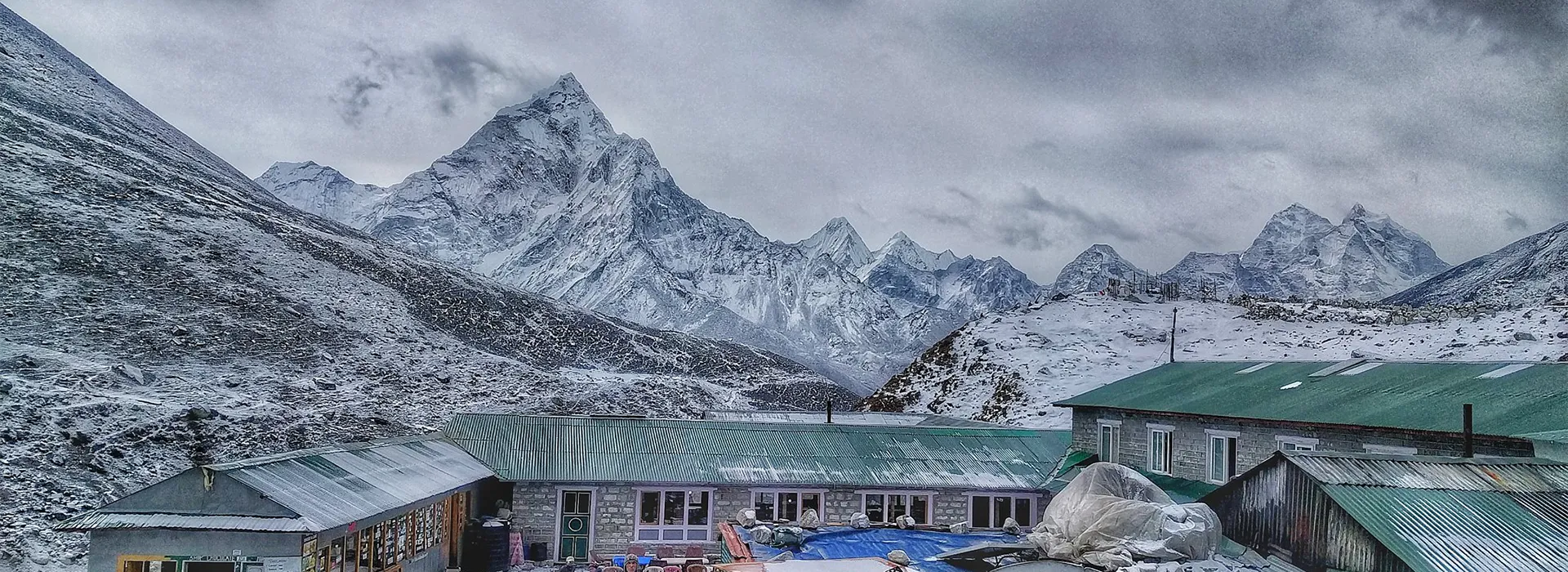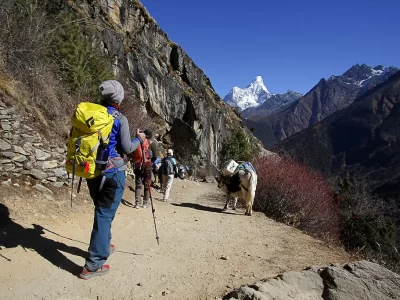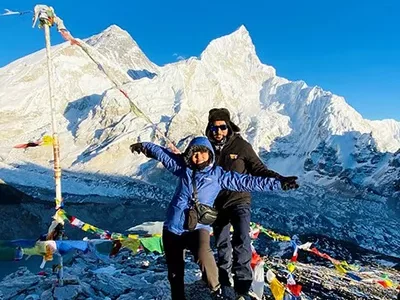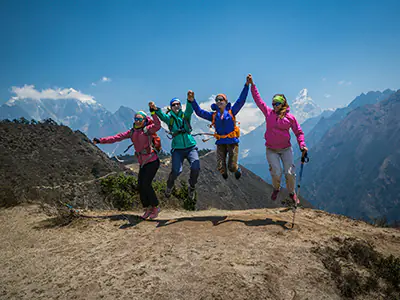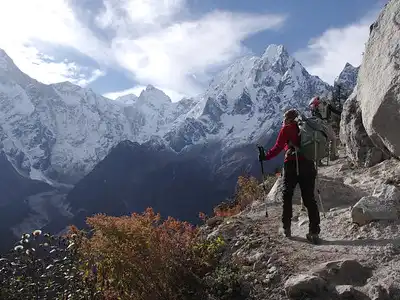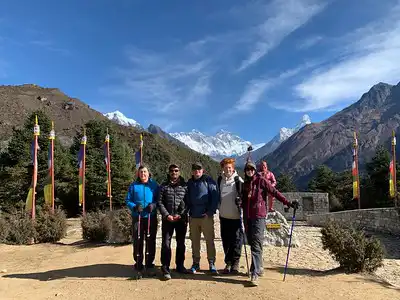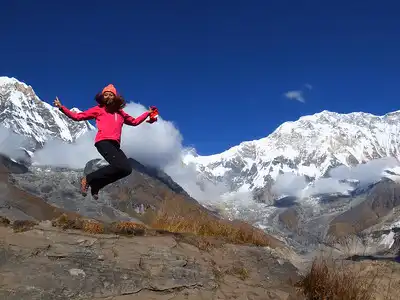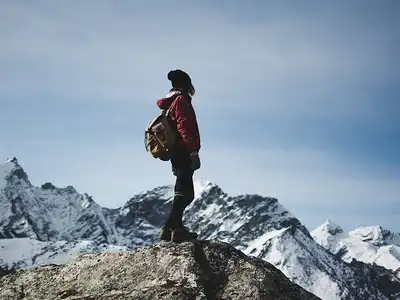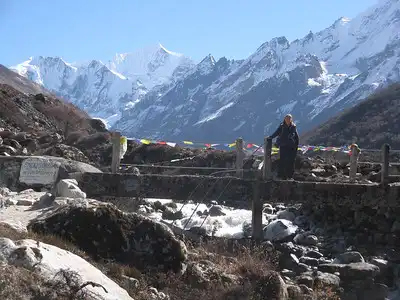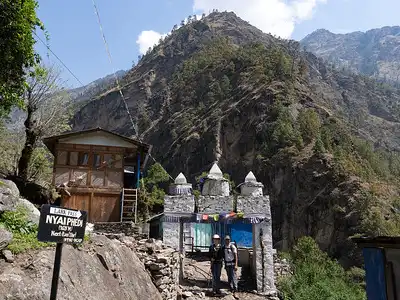The breathtaking Himalayan views and the attraction of Mount Everest draw travelers from all over the world to the Everest Base Camp Trek. Doing this trek necessitates a keen understanding of the “10 Important Things for Everest Base Camp Trek Preparation,” pivotal for a fulfilling and safe journey. This preparation transcends mere gear selection, demanding physical and mental fitness, and thorough logistical planning to tackle the demanding terrain and high altitudes confidently.
More than just assembling the right equipment, successful preparation for the trek demands engaging in various activities and considerations crucial for the journey’s success. Key aspects like physical training for high altitude, nutritional planning for trekkers, seasonal trekking guides, essential trekking gear, and engaging experienced guides to stand as the cornerstone of trek preparation.
By integrating effective mental preparation, consistent hiking and cardio practice, selecting appropriate footwear, and timing the trek correctly, adventurers can lay a solid foundation for an epic Everest Base Camp experience. Prioritizing these preparation facets not only amplifies the trekking experience but also guarantees safety and pleasure throughout the expedition.
Use a tactical approach that incorporates both strength- and cardio training to get ready for the Everest Base Camp trek. Here is the guide actively rephrased, focusing on the 10 Important Things for Everest Base Camp Trek Preparation:
Physical Fitness and Training
Tackling the 15-day Everest Base Camp Trek demands robust physical fitness, as trekkers face steep slopes, uneven paths, and the challenges of high altitude. This adventure pushes endurance, muscle strength, and acclimatization to low oxygen levels, highlighting the necessity of being in top physical shape for both enjoyment and success on the trek.
Aspiring trekkers need to adopt a thorough training regimen that boosts both stamina and muscular strength. Engaging in cardio activities such as running, biking, or swimming, coupled with strength-building exercises like squats, lunges, and lifting weights, forms the core of effective preparation.
Starting this training at least six months in advance, with a focus on progressively intensifying the workouts, will best simulate the trek’s physical demands. Additionally, undertaking regular hikes in varied, mountainous terrain, ideally with a weighted backpack, serves as practical training, enhancing one’s physical condition for the challenging 15-day Everest Base Camp Trek.
Mental Preparation
Mental readiness is as crucial as physical fitness for the Everest Base Camp Trek. It would help if you approached the trek with seriousness; it’s a formidable 15-day journey that will test you in extraordinary ways. This trek will lead you through cold climates, isolated villages, and challenging terrains of ascents and descents, offering an experience far removed from your usual environment.
Understand that you’re committing to more than just enjoying stunning landscapes and unique culinary experiences. You’re also gearing up to overcome numerous challenges to reach the pinnacle moment of arriving at Everest Base Camp.
To mentally prepare, seek environments that replicate the base camp conditions. You can opt for areas with colder climates and reduce your reliance on technology to better adapt to the trek’s setting. Learning to endure the cold without relying on your phone is essential for preserving battery life and adjusting to limited internet access.
Given the difficulty many face without constant internet connectivity, reducing your dependency on it weeks before the trek can be beneficial. Please think of this as an essential component of your Everest Base Camp Trek preparation, as it will improve your entire trekking experience and help you get used to the absence of internet connectivity.
Everest Base Camp Short Trek
Everest Base Camp Trek
Everest Base Camp Trek for Beginners
Acclimatization
Before you go to your destination, please carefully review your itinerary. While packaged tours typically include proper acclimatization points and stops, solo travelers should ensure they plan adequate acclimatization breaks to mitigate the risk of altitude sickness.
Given that the Everest Base Camp trek involves higher elevations, altitude sickness is a common concern. It’s crucial to select stops carefully to manage this risk. Namche Bazaar, in particular, is a critical acclimatization point, as many tourists have encountered altitude sickness when rushing through this stop.
Furthermore, it’s essential to take sufficient time to adjust to the ascent and acclimatization. By adopting the appropriate precautions and safety measures, you can minimize the likelihood of altitude sickness during your trek to Everest Base Camp.
Practice Hiking
I think that planning a Himalayan trek requires incorporating hiking into your training regimen. You can actively seek out uphill trails in your vicinity and commit to hiking at least once or twice a week. Aim to walk for five to six hours each day, allowing minimal breaks to enhance your endurance.
Start with a light daypack to get used to carrying weight, and incrementally add more to build your strength and prepare for carrying a backpack on your trek. This gradual increase helps your body adjust to the extra load and strengthens you for the journey ahead.
During your training, listen to your body’s cues carefully. Take breaks as needed, consistently hydrate, and maintain a nutritious diet. These practices ensure your body receives the essential nutrients to fuel your hiking preparation.
Practice Cardio
Cardiovascular fitness is crucial for high-altitude trekking, like the journey to Everest Base Camp, where the thin atmosphere requires greater effort from your heart and lungs to oxygenate your body.
By engaging in exercises that target the cardiovascular system, you can enhance your ability to perform sustained physical activity, easing your climb and minimizing the chances of suffering from altitude sickness.
Running, cycling, swimming, and stair climbing stand out as excellent cardio exercises that boost your heart rate and improve the flow of oxygen in your body. Interval training, which involves alternating between intense activity and recovery phases, effectively boosts your aerobic capacity. Committing to these cardio workouts four to five times a week conditions your body, building the stamina necessary for the demanding environment of high-altitude trekking.
Eat Healthy Diets
Monitoring your nutrition is crucial as you prepare for high-altitude trekking, where your daily caloric expenditure will increase. To sustain your energy levels, you must intake more calories.
Incorporate complex carbohydrates like whole grains, fruits, and vegetables into your diet for sustained energy release. Boost your protein consumption to support muscle development and overall health.
Pre-planning your meals ensures you eat the right types and amounts of food. You can look for advice from a nutritionist or trainer to tailor your diet plan. Paying attention to your nutritional intake and ensuring you consume beneficial foods equips you with the necessary energy and strength for the trek’s demands.
Best Time to Trek
April and May, the pre-monsoon spring months, along with October and November, the post-monsoon autumn months, emerge as the best times to trek to Everest Base Camp. These periods promise the clearest skies, most stable weather, and moderate temperatures, creating perfect conditions for hiking and savoring the Himalayan panoramas.
Spring revitalizes the trail with blooming rhododendrons and a spectrum of wildflowers, offering a lively setting for the journey. During this season, stable weather and cool temperatures facilitate extended trekking sessions. Nonetheless, spring may also introduce sporadic pre-monsoon rains and attract large crowds to the trails, given its popularity among trekkers.
Autumn marks another ideal trekking season, with clear skies and crisp air that enhance the visibility of Everest and adjacent peaks. This season’s stable weather, coupled with the crispness following the monsoon, sharpens the natural scenery. However, like in spring, autumn trails often become busy, potentially diminishing the sense of isolation some trekkers seek.
Venturing during off-peak seasons presents unique experiences: Winter (December to February) offers severe cold, shorter daylight hours, and potential snow, creating tougher, less populated trekking conditions. Conversely, the monsoon period (June to August) brings lush landscapes and abundant waterfalls amidst wet trails, weather-induced flight delays, and cloud-obscured views, appealing to trekkers ready for the challenges of rain-soaked paths.
Packing the Essentials
Successfully undertaking the Everest Base Camp trek requires careful packing of essential gear and personal items to ensure both safety and comfort. Here’s what you should include:
Backpack: Choose a durable and comfortable backpack equipped with a rain cover.
Clothing: Opt for a layered clothing approach with thermal base layers, insulating fleece or down mid-layers, and waterproof, windproof outer layers.
Footwear: Invest in quality trekking boots and bring multiple pairs of woolen or synthetic socks.
Sleeping gear: Select a sleeping bag rated for sub-zero temperatures and a sleeping pad for added insulation.
Navigation tools: Carry a map compass, and consider a GPS device for guidance.
Headgear: Protect yourself with a sun hat, a warm hat, and sunglasses against various weather conditions.
Handwear: Keep your hands warm with insulated gloves or mittens.
Trekking poles: Ensure they are adjustable and robust for support.
Personal hygiene items: Consider packing essentials such as a toothbrush, toothpaste, biodegradable soap, and a quick-dry towel.
First-aid kit: Include treatments for headaches, diarrhea, altitude sickness, and other common ailments.
Water treatment: Bring water purification tablets or a filter to ensure safe drinking water.
Snacks and nutrition: Carry energy bars, dried fruits, and nuts for quick energy boosts.
Electronics: Include a headlamp with spare batteries, a camera, and portable chargers.
For space-saving and weight reduction in your pack, consider these strategies:
- Opt for travel-sized toiletry containers and pack only the necessary quantities.
- Select items that have multiple uses to reduce the overall number of items needed.
- Roll clothing to conserve space and prevent creasing.
- Maximize pack space by filling shoes and nooks with smaller items like socks and underwear.
- Position heavier items near your spine and higher in the pack for even weight distribution and better balance.
- Critically assess each packed item, removing any that are not essential to lighten your load.
Guide/Porter
Guides and porters significantly enhance the Everest Base Camp trek experience. Guides take the lead, offering insights into local culture, geography, and history while also ensuring the group’s safety. They possess the necessary training to navigate trails and handle emergencies, such as altitude sickness and adverse weather conditions. Porters, meanwhile, prove essential by carrying most of the luggage, which enables trekkers to travel lightly and save their energy for the hike.
The benefits of employing guides and porters are manifold, encompassing logistical support, improved safety, and deeper cultural understanding. When selecting a service, prioritize licensed and experienced professionals from reputable trekking agencies. I’m looking for recommendations from previous trekkers and reading reviews to help make an informed choice. Moreover, verifying that guides and porters have the proper equipment and insurance is vital for their protection and promotes ethical trekking. Hiring dependable guide and porter services ensures a richer, safer, and more enjoyable Everest Base Camp trek experience.
Small Groups Mean Better Safety
Our groups typically consist of a maximum of 10 individuals, with a ratio of 4 guides for every ten trekkers. This smaller team setup significantly enhances safety during your Everest trek. Unlike many other teams on the trail, which often have only one guide for a group of 10, our approach ensures adequate support and attention for each trekker.
In this practice, having limited staff can compel individuals struggling with altitude sickness or oxygen deprivation to continue trekking, risking their safety in dangerous situations. We aim to prevent such scenarios by providing ample staff to support the group. Our priority is to ensure that if anyone needs to turn back, it does not jeopardize the safety of the entire team.
With our experienced guides and support staff adhering to the Ian Taylor Trekking safety standards, we strive to minimize risks in the Everest Region. In the past year alone, nearly 300 individuals trekked in the Everest Region under our guidance, with 272 successfully achieving their goals and returning safely. These safety measures are essential for mitigating the risks inherent in navigating such a low-oxygen environment.
Conclusion
Successfully preparing for the Everest Base Camp Trek demands careful attention to physical fitness and training, mental readiness, proper acclimatization, and strategic packing of essential gear. Enhancing safety and enjoyment is further achieved by selecting the optimal trekking time, engaging experienced guides and porters, and favoring smaller trekking groups.
Trekkers must prioritize respecting nature and local cultures, embracing responsible trekking practices to preserve the pristine environment and support the communities along the trail. With thorough preparation and a respectful attitude, adventurers can confidently be doing the Everest Base Camp Trek, equipped to conquer its challenges while marveling at the breathtaking beauty of the Himalayas.
